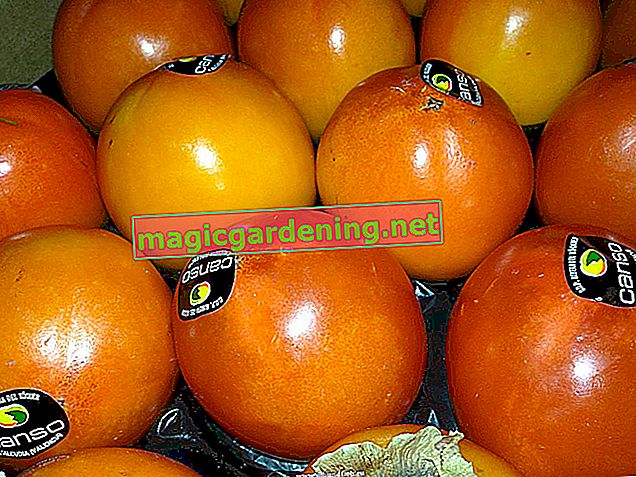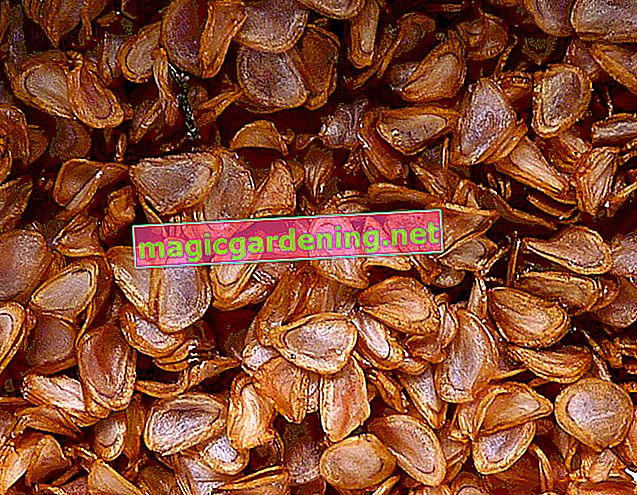
The origin of the persimmon tree - one of the oldest cultivated plants on earth - is believed to be in East Asia. The majority of the fruits available in the trade still come from East Asian countries:
- Japan,
- Korea,
- China.
also read
- When is persimmon ripe?
- The persimmon - can the exotic go in the freezer?
- Why do persimmons have brown spots?
The persimmon fruit is also grown in other countries with a subtropical climate, e.g. B. in Southern Europe and in the USA. A refined form of persimmon is the sharon fruit, which is cultivated on the Sharon plain in Israel for export purposes.
Persimmon, persimmon or persimmon?
All names refer to the tasty berry fruits of a Diospyros kaki - the fruit tree from the ebony family (Ebenaceae). Often the names are used as synonyms. The species differ not only according to their origin, but also according to the nature of the fruit.
Persimmon
The fruits of the Diospyros persimmon are large and spherical, have firm, smooth skin, which can be colored in different intense orange depending on the degree of ripeness. The classic persimmon fruit has very soft, juicy, jelly-like flesh when ripe. The hard fruits are practically inedible because they cause a furry feeling in the mouth due to the tannins. The kakis come to us from Asia.
Sharon
The Sharon fruit is a breed from Israel. Their fruits are smaller and flatter than the persimmon fruits. They look more like tomatoes. Their advantage is that they can be stored longer and eaten in the hard state, as they hardly contain tannins. They also have a thinner shell.
persimmon
This breed comes from eastern North America. The fruits of Diospyros virginiana are relatively small and oval in shape. Like the Sharon fruits, they have firm pulp and taste pleasantly sweet and fresh even when they are not fully ripe, hard, like a mixture of honeydew melon, pear and apricot.
Tips & Tricks
A persimmon fruit that is inedible due to its high tannin content can be eaten after it has been stored in the freezer for a short time. The pulp becomes soft after freezing, but loses its firmness and can then be spooned out of the skin.
n / A








